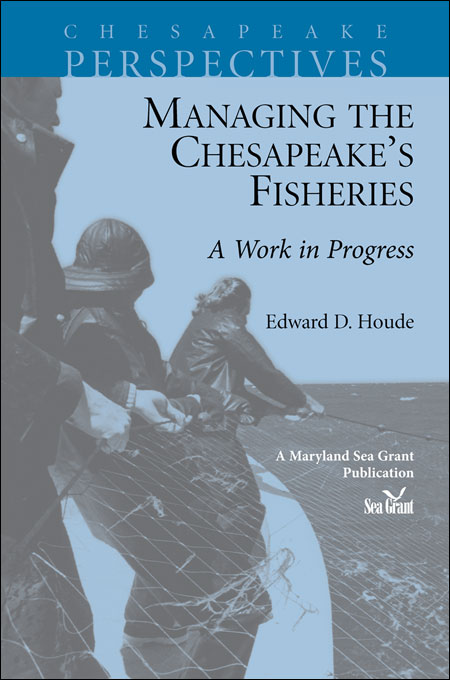Knauss legislative fellowships in Congress help build careers — and they're fun and educational. See our video and fact sheet for details.
Blue Crabs

There’s nothing like a bushel of blue crabs steamed with Old Bay seasoning or picked and lightly grilled in a crab cake. Generations of Marylanders have loved their crab.
Despite this long-running love affair, or maybe because of it, the blue crab fishery in Maryland has faced numerous ups and downs throughout its history. While this fishery has been the state’s largest and most profitable for years, populations of blue crab (Callinectes sapidus) face a number of challenges today. Those include:
- Fishing pressures have driven down the number of crabs in the Chesapeake Bay at various times throughout Maryland’s history.
- Shoreline development and the disappearance of underwater grasses across much of the Bay have led to the loss of habitats for juvenile crabs.
- “Dead zones” of low- to no-oxygen near the bottom of the Bay can suffocate crabs as they move up the estuary during the summer.
The population of blue crabs in the Chesapeake Bay has fluctuated significantly during the past decade. Reasons include the natural life cycle of crabs, harvest levels, and cycles in climate patterns that affect crab reproduction.
Populations dropped dangerously in the mid-2000s. Thanks in part to new harvest limits established in 2008 for female crabs, overall population numbers have improved in some years since, soaring to an estimated 765 million crabs in 2012. But the number shrank significantly to only about 300 million crabs in 2013 and remained at that level in 2014.
Maryland Sea Grant's Role
Maryland Sea Grant supports research that informs the management of the blue crab fishery. Our goal is to help conserve the Bay’s crabs while supporting the livelihoods of Maryland watermen.
Maryland Sea Grant was integral in organizing and advising the Bi-State Blue Crab Advisory Committee (BBCAC), a partnership between Maryland and Virginia. Recommendations made by this committee helped to inform new fisheries rules in both states — rules that in turn have been credited with restoring blue crab numbers across the Chesapeake. Read its summary recommendations.
To learn more about the blue crab fishery and its management, check out these Maryland Sea Grant resources:
- Tracking the Blue Crab Comeback, an issue of Chesapeake Quarterly, Maryland Sea Grant’s magazine: Learn about the decline and recent recovery of blue crabs in the Bay.
- The Blue Crab: Callinectes Sapidus, an 800-page textbook for sale through our Bookstore. Edited by marine biologists Victor Kennedy and L. Eugene Cronin, this volume provides a comprehensive survey of blue crab biology, ecology, and history.
- License buy back: Economists with Maryland Sea Grant Extension provided analysis that helped to shape a state project to buy back unused commercial crabbing licenses. Aided by our studies of prevailing market license prices, the state Department of Natural Resources purchased hundreds of licenses from Marylanders who had not fished for crabs in years. The goal was to help sustain the blue crab’s fragile recovery in the Bay by reducing future potential fishing pressure. Another was to help assure the sustainability of a fishery on which working watermen depend for their livelihoods. Read more about the project in “The Value of Crabbing,” an article in Chesapeake Quarterly.
The Blue Crab Winter Dredge Survey, conducted annually by the states of Maryland and Virginia, estimates numbers of crabs in the Bay, including juveniles and spawning females.
YouTube playlist:
View this video by Maryland Sea Grant
Bay Farms and Blue Crabs
The runoff of fertilizer and animal waste can rob the Chesapeake Bay of oxygen that blue crabs need -- and so can sewage from small towns, suburbs and cities. See a three-dimensional model of the Bay's "dead zone," areas of low oxygen.







